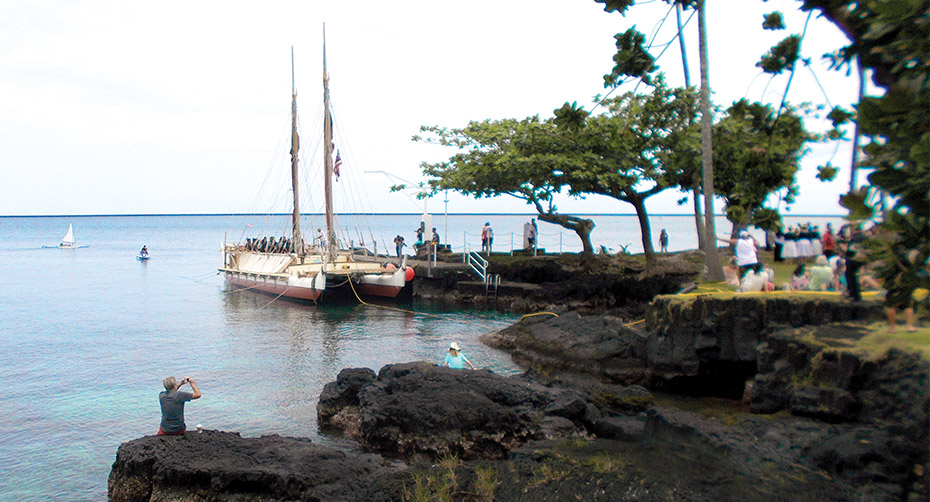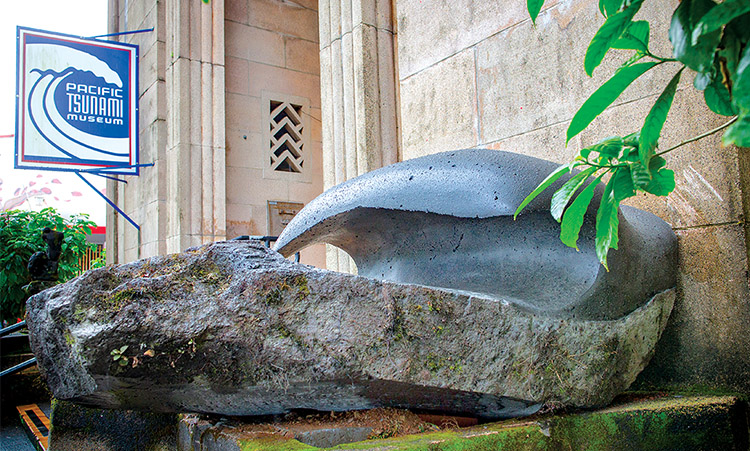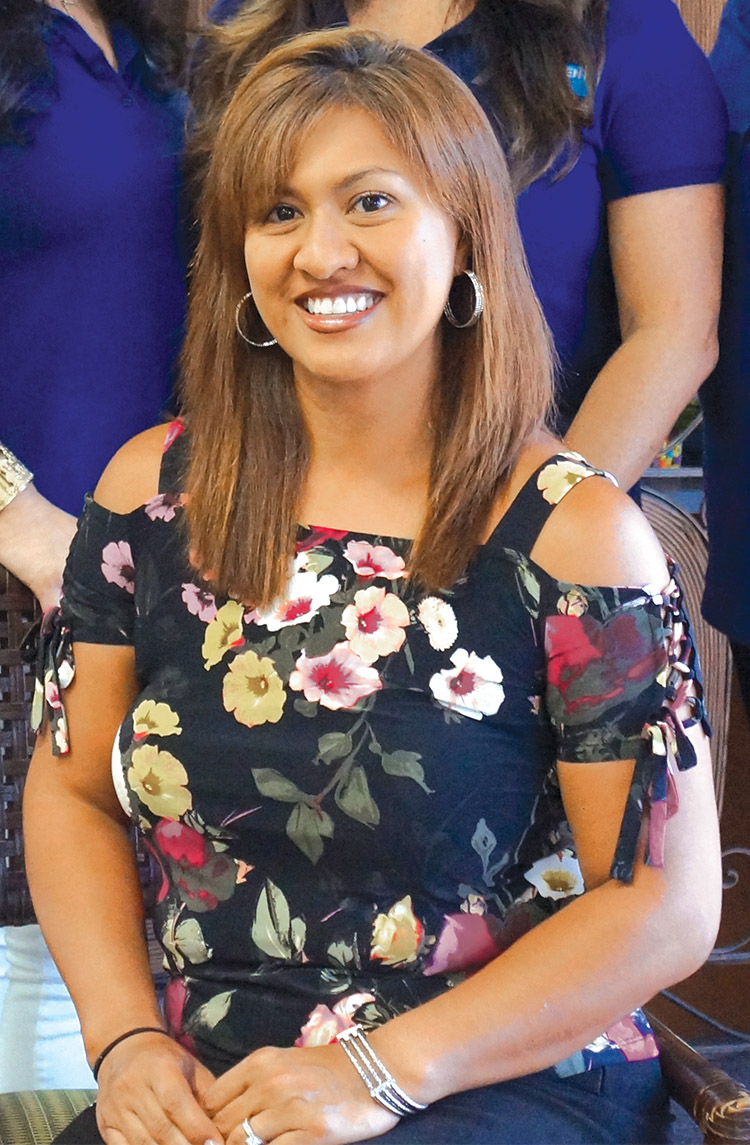
The Compost King of Hilo UrbFarm
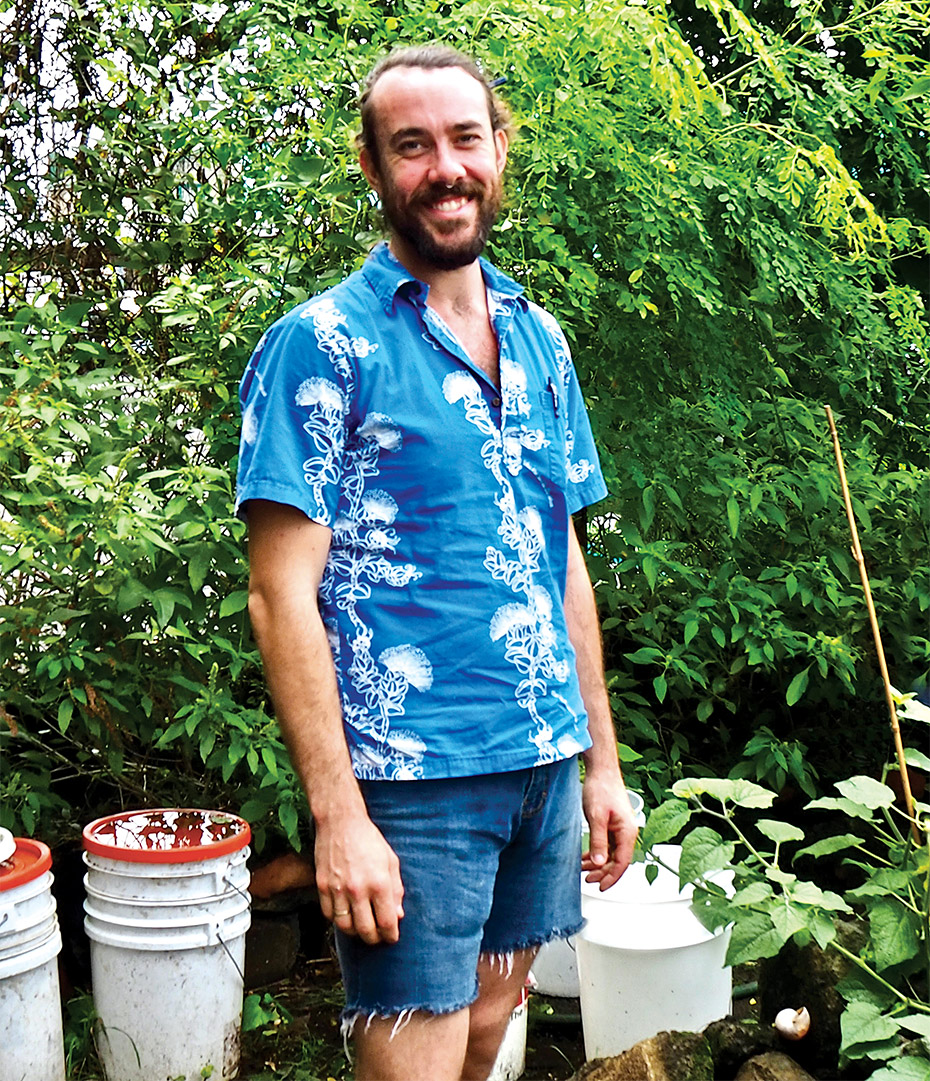
By Brittany P. Anderson
As the saying goes, “One man’s trash is another man’s treasure,” and this couldn’t be more true for Michael Pierron, founder of Hilo UrbFarm, as he spins organic waste into garden gold. The Hilo UrbFarm, founded in 2016 by Michael, serves the community and the island at large by promoting sustainability through diverting organic waste, growing food-bearing and native plants, and building a sense of community.
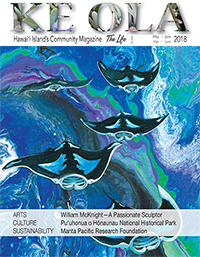
It was in a package of imported basil that Michael, a graduate of the University of Hawai‘i College of Agriculture, Forestry and Natural Resource Management, found the inspiration to develop the UrbFarm. “The Big Island is the agriculture center, why are we reaching across the ocean for something so basic?” he wondered and from there the idea to create UrbFarm blossomed.
As Hawai‘i Island focuses on sustainability as a means for thriving into the future, Michael believes that composting is one of the most important and perhaps the easiest first steps for Hawai‘i Island. “Compost is the foundation of everything. Our consumer mindset is linear: something is grown, it is used, and then it is thrown away. But once something is thrown away it should be broken down to be used again,” he explains.
Behind East Hawaii Cultural Center (EHCC), in a forgotten back alley space surrounded by fencing and parking lots, Hilo UrbFarm’s nursery and composting operation thrive. The UrbFarm transforms organic compostable waste from area businesses into “magic compost” to grow a variety of native and edible plants, as well as medicinal herbs.
What is Composting?
Composting is the natural process that turns organic materials, dead plants and plant waste into a rich soil-like substance. Michael utilizes office paper waste and adds food scraps from local restaurants. Businesses seeking to decrease their impact on Hawai‘i Island’s near-capacity landfill look to the UrbFarm as their solution.
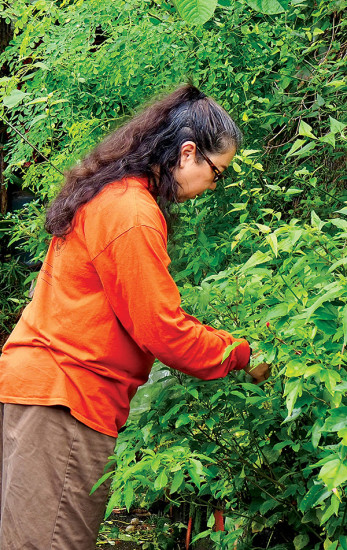
The mixture is allowed time to decompose and is frequently turned over to allow proper aeration before it is used for planting. The addition of compost to gardens and yards can help feed plants, making them bigger and higher producing.
Hilo UrbFarm’s process creates rich soil and also encourages a sense of community. The gardens at the East Hawaii Cultural Center are cultivated with native and edible plants. Michael and his gardening army of volunteers help beautify historic EHCC on their monthly “Mālama EHCC Day” to honor the place the UrbFarm has called home for the past two years.
Every Monday and Wednesday, Hilo UrbFarm opens at 9:30am for volunteers to come help turn compost, pick herbs, and plant seeds. Keoki and Kelly, volunteers from Hale ‘Oulea, Hawai‘i Island’s Adult Mental Health Department, are dedicated to both the plants and the vision of the UrbFarm. “This wouldn’t be possible without their help,” Michael says as Kelly and Keoki beam. A dream partnership, Hale‘oulea asked if Michael would like to receive volunteers as part of the department’s regular community engagement program. Overwhelmed with managing the UrbFarm alone, he welcomed them with open arms.
“I like working with my hands out in the sunshine,” Kelly says smiling. Keoki agrees before describing his process for tending to the compost pile. “At the end, you have to sift it twice to get all the big pieces out,” he explains. Kelly and Keoki glow with pride as we tour the secret garden, pointing out plants they have cultivated. Keoki works on an experiment to see how well seeds grow in varying percentages of compost when compared to seeds grown in just soil. “The seeds with the most compost are doing the best,” Keoki and Michael, looking at each other, agree.
The UrbFarm operation is one of synergistic love and respect for nature, Hawai‘i Island, and a passion for community, which is why it comes as a shock that vandals have broken into the nursery several times since its creation. One major incident left the UrbFarm completely in ruins. “Tables were flipped, pots were turned over, everything was just destroyed,” Michael recounts. He posted pictures of the damage on Facebook with a call for help, and within 20 minutes he had an outpouring of support from the community.
“You just keep your head down, working, not realizing that you’ve touched all these people,” he continues, “It was really heartwarming.” Keoki suggested a car wash/plant sale fundraiser to raise money for security cameras for the UrbFarm and it has been their most successful fundraiser to date.
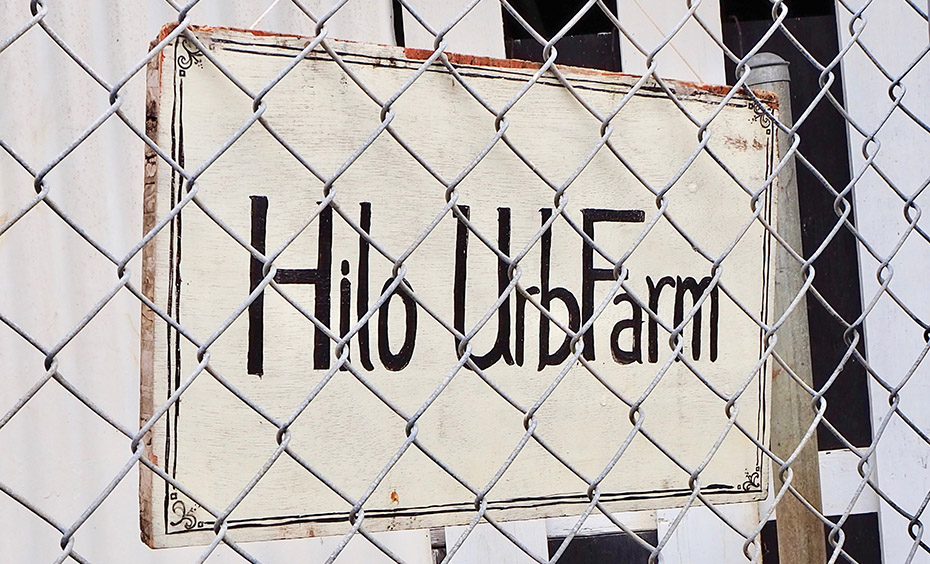
Green Waste and Recycling
With our islandʻs landfills near capacity, diverting refuse that can be used to support a more sustainable island is critical. Changing the way people view waste, essentially turning kitchen scraps and yard debris into a commodity, has become the inspiration behind several composting endeavors throughout Hawai‘i Island.
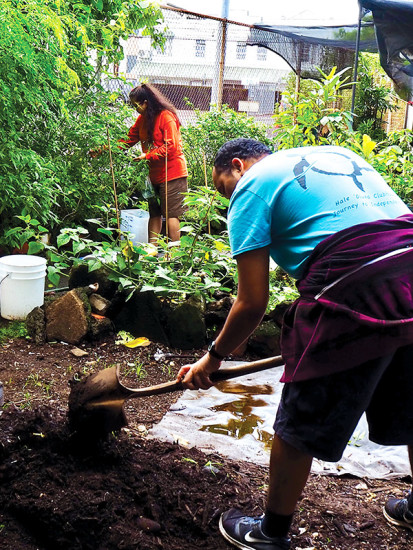
According to the County of Hawai‘i, their green waste facilities have successfully recycled over 267,000 tons of green waste in the past seven years. However, 185,000 tons of yard debris was being dumped in the landfills during this same time period. These numbers also don’t account for compostable kitchen waste that ends in rubbish bins all over Hawai‘i Island.
Seeing an excess of plant-based waste going into the landfill gave Michael inspiration to create a new business, Compost Hawaii. Partnering with Hawaii Green Earth, he created a compost collection service for homes and business in the Hilo area. Compost Hawaii offers weekly organic material collection services for a nominal membership fee. “This business overlaps with Hilo UrbFarm naturally,” he says.
Material that is picked up from homes and businesses will be placed back into the nutrient cycle. The service is convenient, easy, and efficient. Members are supplied five-gallon buckets with a list of accepted materials. Each week filled buckets are swapped out for new empty buckets, decreasing the amount of usable organic waste that ends up in the landfill.
“It empowers people to make one small step to contribute to a ‘big picture’ thing,” he explains. Michael hopes that Compost Hawaii and Hilo UrbFarm can serve as a model for other communities.
Urban Farming
From New York City to Portland, Oregon urban farming has taken the US mainland by storm. Urban farms can take on many forms from composting and plant nursery operations like Michael’s to rooftop honey operations. One underlying constant unifies all these urban farmers—a desire to improve an overall quality of life. Once thought to be a “fad” among city planners, it is clear this local food movement of urban farming is here to stay as a new generation of farmers learn you don’t need a whole lot of acreage to call yourself a farmer.
Michael recently teamed up with Connections Public Charter School, located in downtown Hilo, to inspire the next crop of agriculture enthusiasts. After being invited to teach composting to a grant-funded summer camp in Kurtistown, Michael was contacted by the camp organizers. They had funds left over and wanted to use the money as an endowment to Connections Public Charter School for a fifth grade garden program—with Michael at the helm. Elated at the opportunity, he accepted.
At first, the 30 fifth graders started on a few raised beds at Hilo UrbFarm, and they quickly ran out of room. The class then moved to planting native and fruiting plants of kalo (taro), naupaka (native Hawaiian plant), and poha (cape gooseberry) around EHCC. “You can only do so much with a tiny space,” Michael chuckles.
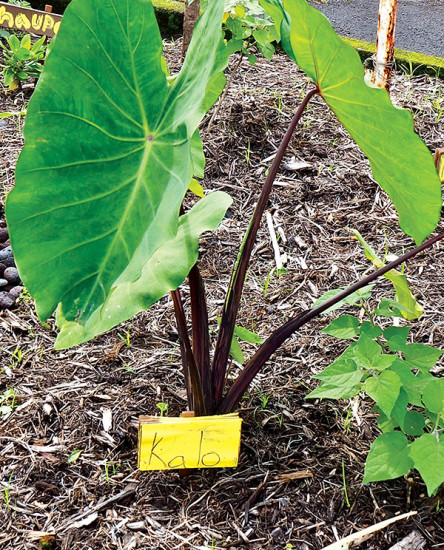
In true UrbFarm fashion, Michael reached out to Eric and Paul of Papa‘a Palaoa Bakery to see about using the strip of barren land behind their business on Kilauea Avenue, and once cleared by the property manager, the children started prepping the land for planting.
“At first the kids didn’t want to get dirty, but now they look forward to getting their hands in the dirt,” Michael laughs. “You can hear their excitement as they walk down the street to the garden.”
The school garden is planted with kalo, bedded in the rich compost and soil the students created at the UrbFarm. Tying the whole experience together, the intent is to produce and harvest enough kalo so the class can create a laulau fundraiser to keep the project running. From discarded organic materials to tasty laulau, the children learn to participate in their community creating a sense of belonging. “When they walk down the street they can say, ‘I did that!’,” Michael says passionately.
Michael’s vision is of small-scale composting operations in each neighborhood providing jobs and volunteer opportunities for residents within the community. Alone, one person cannot make a significant impact on the sustainability of our island. It takes a collective effort—a societal shift in seeing our waste as something that can feed the soil that grows our food, brings neighborhoods together, and in turn nourishes our island community. ❖
For more information: hilourbfarm.com
Mahalo Island Naturals – Local Agriculture Story Sponsor
